Do I need to huddle cabbage in the open field and how to do it?
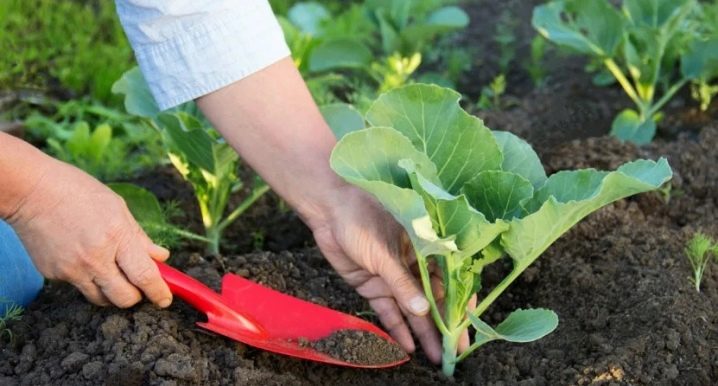
Cabbage, like many other vegetables in garden beds and greenhouses, needs regular hilling. In order for this procedure to really benefit the culture, it is important for gardeners to do everything according to the rules.
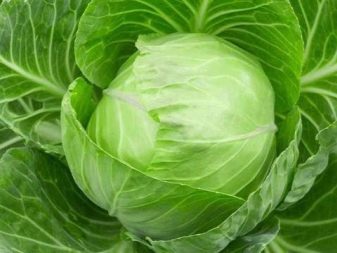
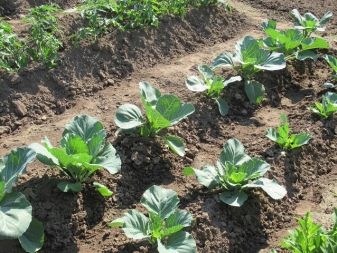
The need for a procedure
Hilling cabbage benefits both young seedlings and mature plants. This procedure performs several functions at once.
- Makes plants stronger. After hilling the plants, lateral roots begin to grow. In addition, the root system goes deeper into the ground. Thanks to this, the cabbage becomes more resistant to external factors.
- Protects the culture from fungal diseases. If adult heads of cabbage lie on the ground, the risk of their disease increases significantly. Therefore, it is important to regularly huddle the cabbage. This procedure allows her to be kept upright. Therefore, the harvest is better preserved.
- Retains moisture in the soil. By sprinkling the roots of plants with a thick layer of soil, the gardener also protects them from direct sunlight. In addition, the hilling procedure allows the soil to be saturated with oxygen.
- Increases crop yield. At the same time, it takes much less time to care for plants. Therefore, it is recommended to sprinkle cabbage even to busy gardeners.
- Protects cabbage from pests. The processes of loosening the soil and hilling cabbage allow you to destroy the larvae of the cabbage fly and other pests. Therefore, plants are less likely to be attacked by various insects.
In addition, earthed beds look neater and more beautiful. They also become much easier to care for and harvest.
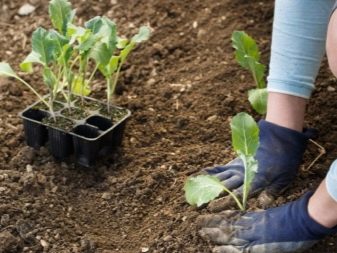
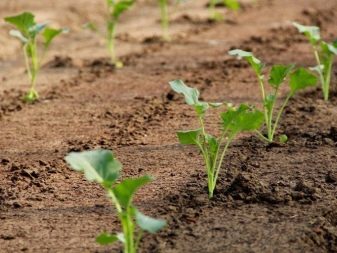
Timing
As a rule, seedlings are spud up for the first time after planting in open ground in 10-16 days. During this time, she already manages to get stronger. Therefore, the gardener may not be afraid to break thin and fragile seedlings. The hilling time depends on where it is grown. So, in the southern regions and in the suburbs, this is done before. Later in the Urals and Siberia. The number of hilling cabbage is not limited.
As a rule, gardeners carefully scoop up a small amount of soil to the stem with each weeding. Cabbage is fully spud usually 2-3 times per season. Cabbage planted in autumn is spud only once. This is usually done about a week after transplanting the plants into the open field. There is no need to repeat the procedure.

Fundamental rules
In order to huddle cabbage correctly, gardeners should pay attention to the following points.
- It is worth spilling only strong and healthy plants. If the cabbage is weakened, you need to wait a bit until it recovers. It is also important to remove all weeds growing in the beds to ensure that the plants are getting enough nutrients. This is usually done just before hilling. Weeds can be dried and used to mulch your garden. In addition, it is often added to compost. This makes it possible to make good use of all plant waste.
- It is better to carry out the hilling procedure at a time when the soil is well moistened. This is best done after rain or heavy watering. This procedure will help prevent moisture from evaporating from the soil. Separately, it should be noted that additional hilling of cabbage after prolonged rains will help remove excess moisture from the crop.
- For hilling a crop, you can use a hoe, hoe or hiller. The choice of tools depends on the preferences of the gardeners. Some people prefer to use a small, pointed spatula to tuck cabbage beds.
- You need to sprinkle the plants carefully, trying not to damage the root system. Only the topsoil is used to protect the stem. Before hilling, it is important to break up all the lumps of earth well with a hoe. The soil should be soft and easily breathable to the roots of the plants.
- The ground should not fall on green foliage. It is especially important to remember this when hilling young seedlings. If you sprinkle the first true leaves with soil, the cabbage will develop very slowly. Sprinkling the foliage of adult plants, the gardener can lead to rotting of the crop.
- Hilling cabbage can be combined with additional fertilization of cabbage beds. At this time, the plants can be fed with dry wood ash or high-quality mineral fertilizers. These products can be applied to the soil both dry and in the form of a solution.
- If the cabbage was planted in sandy soil, you should not often loosen and huddle it. This will keep the soil moist for longer.
All these simple tips will come in handy for people who grow any of the varieties of cabbage.
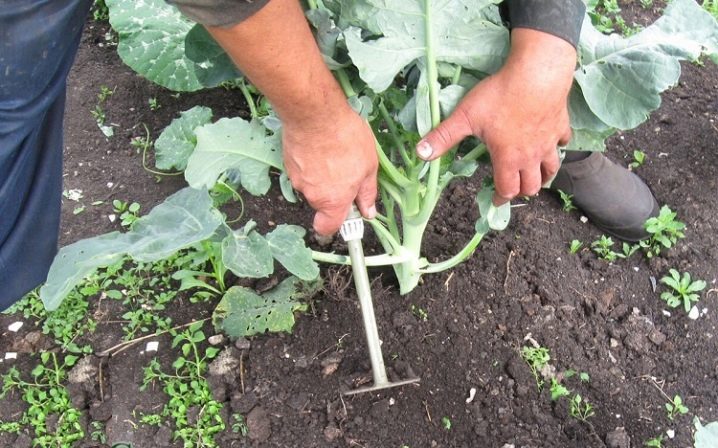
Hilling different types of cabbage
When hilling plants, it is important to take into account the specific characteristics of various plants.
Broccoli
You need to sprinkle broccoli three weeks after landing in a permanent place. The next procedure is carried out after another 10-12 days. It is very important to sprinkle the broccoli carefully, scooping up a very small amount of soil to the stems. The soil must be moist and well loosened. In the future, broccoli can be spud in the process of each weeding of the site. The height of the mound should always be kept within 4-6 centimeters.

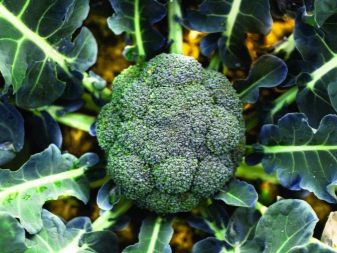
Brussels
When growing Brussels sprouts in the country, you should not huddle it. This procedure will only harm young plants. The fact is that the largest fruits usually form in the axils of the lower foliage. In the process of hilling the beds, the gardener can damage them or sprinkle them too much with earth. All this negatively affects the condition of plants. Therefore, the beds will only have to be loosened from time to time, avoiding strong compaction of the earth.
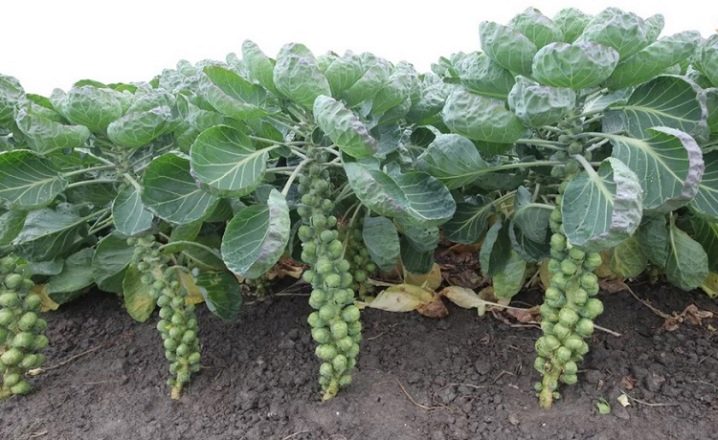
Colored
This type of cabbage is spud up after 8-10 days. The second time, the procedure is carried out a week after the appearance of inflorescences. When the head of cabbage begins to gain weight, the cabbage will have to be spud again. This will help prevent her from falling.
If the stems of the plant are short and strong enough, the soil can be mulched. For this, you can use ordinary dry grass or straw. Thanks to this, moisture in the soil will be retained for a long time.
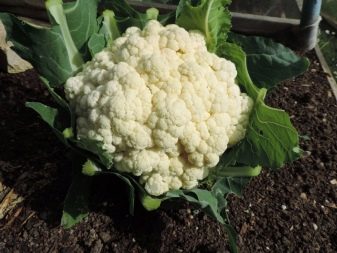
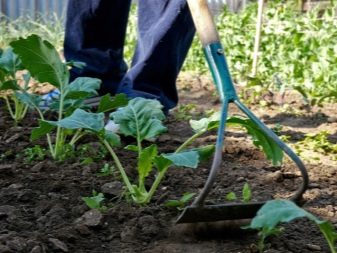
White-headed
This cabbage is usually huddled two or three times throughout the season. During the first procedure, small mounds are created around each bush. Before the second treatment, gardeners remove the lower foliage. This is done so that they do not rot. After that, the mound is made higher. It should be noted that if the lower leaves are large and well protect the soil from the sun's rays, you do not need to huddle the cabbage. The soil under the bushes will remain well hydrated anyway.
Separately, it should be noted that some varieties of cabbage do not huddle at all. So, this procedure can completely destroy kohlrabi. The soil under them just needs to be loosened well. You do not need to huddle and Peking cabbage. To make it juicy and large, it only needs to be watered and fed regularly.
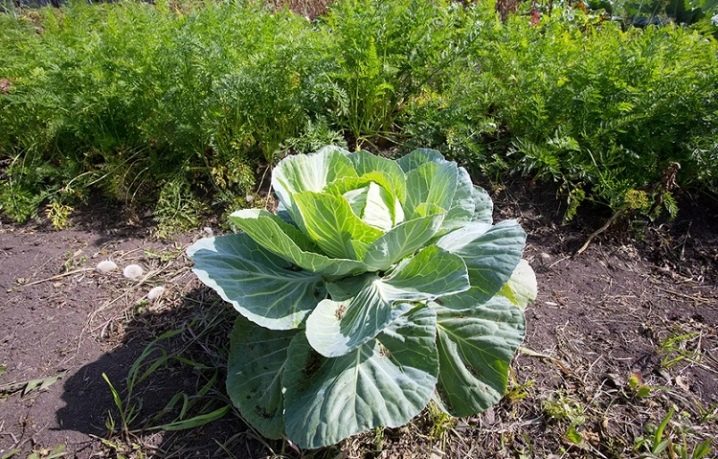
Follow-up care
In order for the cabbage to develop well after hilling, it also needs to be properly looked after. You need to pay attention to the following activities.
- Watering. Cabbage is a moisture-loving plant. It especially needs watering in the first weeks after planting in open ground, as well as during the formation of heads of cabbage.Water the cabbage regularly, paying attention to weather and soil conditions. You can understand that it is time to irrigate the plants by the condition of the soil, which quickly dries up and cracks. For watering, it is worth using warm, settled water. The best way to water the plants is by sprinkling. In this case, they will feel better than when watering at the root.
- Mulching. Some gardeners, after hilling cabbage beds, prefer to additionally mulch the aisles. This helps to strengthen the rows as well as protect the cabbage from weeds. In the beds, you can use dry grass, sawdust or straw. To repel pests, the aisles can be additionally sprinkled with cake or mustard powder. These natural products are completely safe for plants and people.
- Top dressing. In order for the cabbage to grow actively, it can be additionally fed after hilling. Usually a urea solution is used for this purpose. Any kind of cabbage can be fertilized with such a product. Late varieties of cabbage are additionally fed with foods containing potassium. This procedure allows you to increase the shelf life of the heads of cabbage.
After the procedure, the plants are also regularly examined. This is done in order to make sure that the procedure does not harm them in any way. It is also important to check that the plants have not been attacked by insects.
Cabbage in the open field may well grow without hilling. But this procedure significantly increases the yield of the plant. Therefore, even busy gardeners should not ignore it.
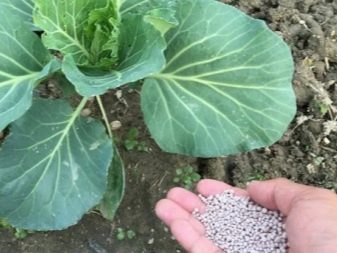
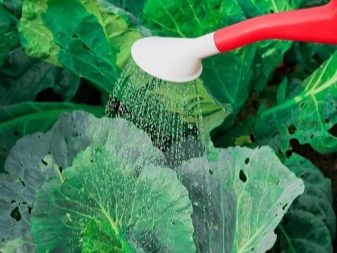













The comment was sent successfully.